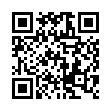|
This article is cited in 1 scientific paper (total in 1 paper)
Robotics, Automation and Control Systems
Spoofing attack detection method for UAV navigation system
E. Basan, E. Abramov, A. Basyuk, N. Sushkin
Southern Federal University
Abstract:
An implementation of methods for protecting unmanned aerial vehicles (UAVs) from spoofing attacks of the global positioning system (GPS) to ensure safe navigation is discussed in this paper. The Global Navigation Satellite System (GNSS) is widely used to locate UAVs and is by far the most popular navigation solution. This is due to the simplicity and relatively low cost of this technology, as well as the accuracy of the transmitted coordinates. However, there are many security threats to GPS navigation. Primarily this is due to the nature of the GPS signal, the signal is transmitted in the clear, so an attacker can block or tamper with it. This study analyzes the existing GPS protection methods. As part of the study, an experimental stand and scenarios of attacks on the UAV GPS system were developed. Data from the UAV flight logbook was collected and an analysis of cyber-physical parameters was carried out to see an effect of the attack on the on-board sensors readings. Based on this, a new method for detecting UAV anomalies was proposed, based on an analysis of changes in UAV internal parameters. This self-diagnosis method allows the UAV to independently assess the presence of changes in its subsystems and identify signs of a cyberattack. To detect an attack, the UAV collects data on changes in cyber-physical parameters over a certain period of time, then updates this data. As a result it is necessary for the UAV to determine the degree of difference between the two time series of the collected data. The greater the degree of difference between the updated data and the previous ones, the more likely the UAV is under attack.
Keywords:
security, attack, navigation system, UAV, threat, probability, protection technology, global navigation satellite system.
Received: 02.05.2021
Citation:
E. Basan, E. Abramov, A. Basyuk, N. Sushkin, “Spoofing attack detection method for UAV navigation system”, Informatics and Automation, 20:6 (2021), 1368–1394
Linking options:
https://www.mathnet.ru/eng/trspy1179 https://www.mathnet.ru/eng/trspy/v20/i6/p1368
|

| Statistics & downloads: |
| Abstract page: | 136 | | Full-text PDF : | 458 |
|




 Contact us:
Contact us: Terms of Use
Terms of Use
 Registration to the website
Registration to the website Logotypes
Logotypes








 Citation in format
Citation in format 
